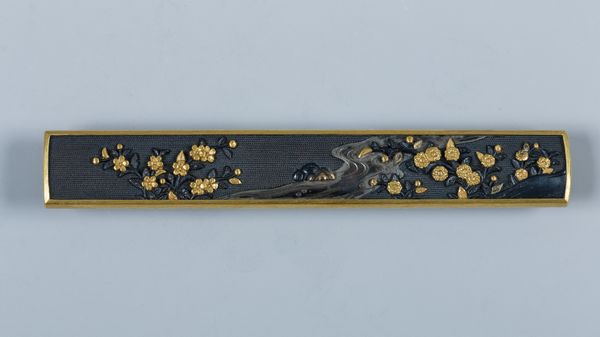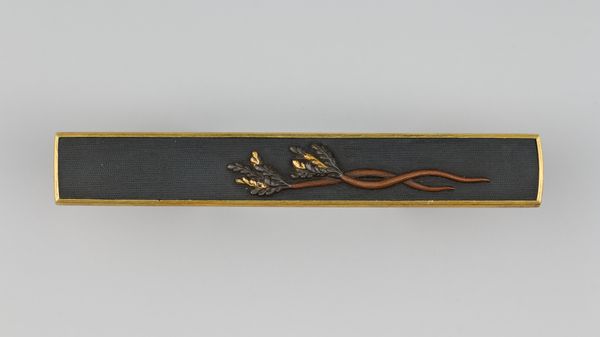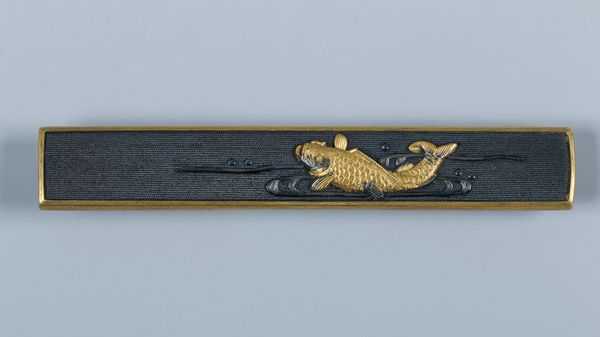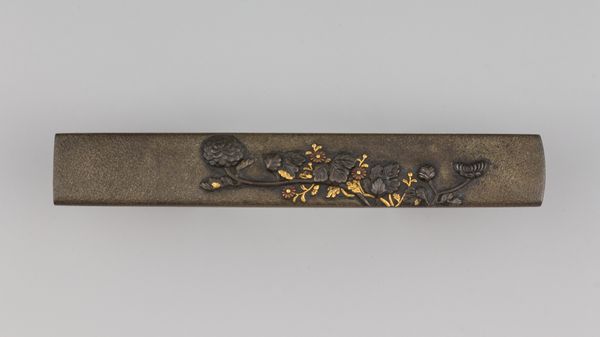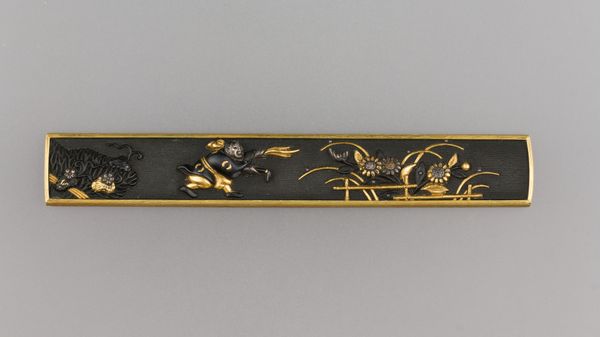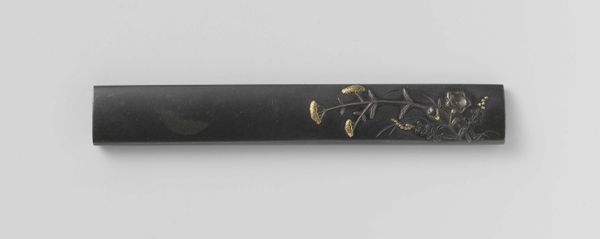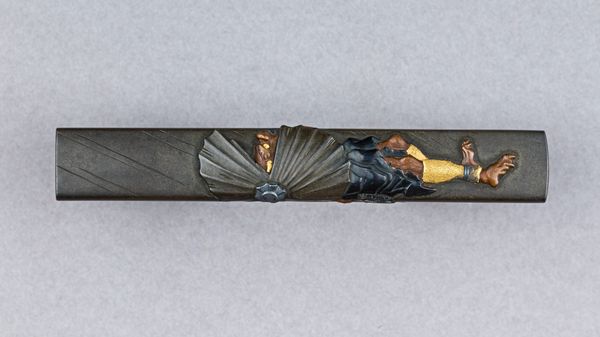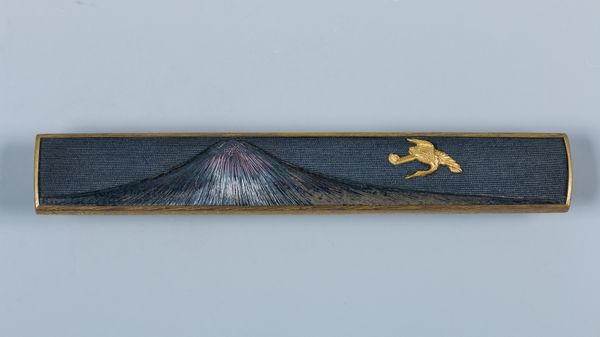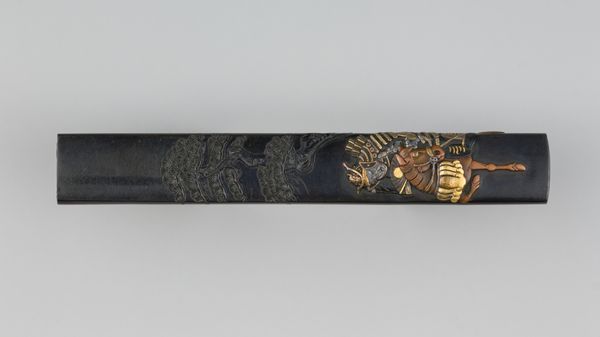
metal, relief, bronze, sculpture, wood, ivory
#
metal
#
asian-art
#
relief
#
landscape
#
bronze
#
japan
#
geometric
#
sculpture
#
wood
#
armor
#
sword
#
ivory
Dimensions: L. 3 13/16 in. (9.7 cm); W. 9/16 in. (1.4 cm)
Copyright: Public Domain
Curator: Well, I'm immediately struck by the delicacy of this piece. It's hard to believe it adorned a weapon. Editor: Quite right. We're looking at a kozuka, or knife handle, dating from around 1725 to 1800, attributed to Gotō Mitsumori, also known as Keijō. It resides here at The Metropolitan Museum. What draws me is the interplay of bronze, wood and other metals – how were these materials chosen and what techniques used to unite them? Curator: Indeed! The Met's description mentions that the visible side shows a relief carving in metal of a boar amid foliage, it looks like! And given the association with samurai swords, what story does it tell about status, warfare, and the consumption of finely crafted weaponry in Edo-period Japan? I am curious what kind of craftsman or industry was involved to make the piece in metal with that incredible relief effect. Editor: Excellent points. Boars, even rendered with this degree of refinement, traditionally signify bravery and fierceness. It’s also thought that a boar is only able to run straight ahead, meaning it stands for rectitude, single mindedness. Curator: It's intriguing to consider this image on a knife handle in relation to Bushido, the samurai code. This melding of artistry and lethal functionality seems distinctly Japanese. What was its audience supposed to make of such decoration? Editor: Yes, precisely. Were such elaborate knife handles a common sight, signaling rank and wealth, or were they rare personal statements meant for the close inspection of other elites? Perhaps both! Also, considering the use of bronze – what social meaning does the material itself add? Was it seen as purely functional, or did it have additional connotations of power or even ritual? It might be beneficial to examine workshop records and payment histories for that artisan to better assess costs. Curator: Exactly. Context is paramount here. The art world rarely takes a piece as ‘merely aesthetic’ or for ‘decoration purposes only’. I feel the piece suggests both refinement and something elemental at once, fitting perhaps for a tool used by someone with refined aesthetic values. Editor: A wonderfully evocative tension to explore. Thank you, my insights were definitely enriched today!
Comments
No comments
Be the first to comment and join the conversation on the ultimate creative platform.
